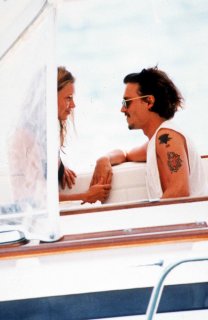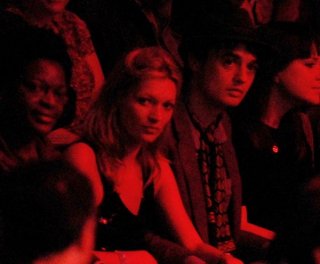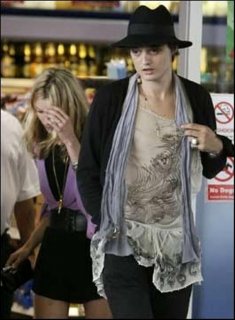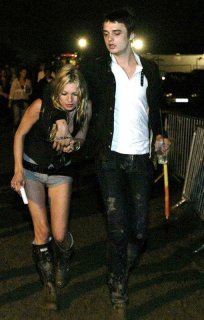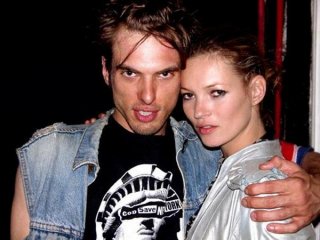-
Announcing... The 3rd annual theFashionSpot Awards for 2025. Vote NOW via the links below:
Designer of the Year
Ready-to-Wear Collection of the Year
Haute Couture Collection of the Year
Model of the Year
Photographer of the Year
Stylist of the Year
Magazine Cover of the Year
Ad Campaign of the Year
Thank you for participating!
VOTING WILL CLOSE 29/12/2025 EOD!
You are using an out of date browser. It may not display this or other websites correctly.
You should upgrade or use an alternative browser.
You should upgrade or use an alternative browser.
Kate Moss - posting requires reading thread rules, see post #1
here is the description of how celebs got their free Balenciaga bags.
timesonline
The first point of note is that in its second life, Balenciaga is a ready-to-wear label only — under its inventor it produced just haute couture (the return of which Ghesquière does not rule out). One of his important moves early on was to create a bag: “The factories in Spain were making things with leather anyway, so why not a bag?”. That bag became the Lariat, which by now wholly deserves to be described as classic yet is still cool enough to spawn endless copies, and still resplendently responsible for waiting lists everywhere, despite the many desirable bags in the world now.
In the beginning, though, the Lariat did not hit the spot. “Nobody was quite sure about it. Even I was not quite sure about it. It was sitting on shelves in shops everywhere, not moving at all for two years.” Then Ghesquière had a flash: why not send it as a gift to precisely the kind of women he wanted to wear his designs? He made a list of 30 names, among whom were Kate Moss and the editor of French Vogue, Carine Roitfeld, and 30 bags were dispatched in time for the New York shows. Wear them they did, and by the time the Paris shows rolled around four weeks later the bag was a hit. And, of course, very soon there were none left on the shelves; Moss still happily totes hers around town.
timesonline
Working Girl
Active Member
- Joined
- Jun 3, 2007
- Messages
- 1,092
- Reaction score
- 1
God, I wish she would cut her hair short again. She looks a lot classier with short hair. Kate has a stunning face, the short hair highlighted that. I really don't like her hair now. She puts it in a ponytail half of the time anyway. Just cut it.
nita-karoliina
Active Member
- Joined
- Dec 4, 2007
- Messages
- 5,766
- Reaction score
- 5
i love that balenciaga bag. i wish i owned it
joshsimona
Active Member
- Joined
- Nov 27, 2008
- Messages
- 1,789
- Reaction score
- 0
me too, just a little bigger one, medium black one
beauxgoris
Active Member
- Joined
- Mar 17, 2006
- Messages
- 1,296
- Reaction score
- 1
i love that balenciaga bag. i wish i owned it
^^Her Balenciaga bags (both the small first and the Flat Brass Hobo) are so RARE now that they go for tons of money if a collector ever decides to part with one.
bella vita
Member
- Joined
- Jul 16, 2009
- Messages
- 167
- Reaction score
- 0
joshsimona that's the exact same one I've always wanted too!
I haven't heard that before beauxgoris. Its quite disappointing because I was finally going to purchase either a classic quilted black Chanel or a medium sized black first lariat with the flat brass studs (I'm just not a fan of the giant studs). Basically I've been wanting the exact same one Nicole Richie is still always toting around, do you know if that one is just as rare now as both of Kate's bags? I was hoping I would just be able to order one from the Balenciaga store.
I haven't heard that before beauxgoris. Its quite disappointing because I was finally going to purchase either a classic quilted black Chanel or a medium sized black first lariat with the flat brass studs (I'm just not a fan of the giant studs). Basically I've been wanting the exact same one Nicole Richie is still always toting around, do you know if that one is just as rare now as both of Kate's bags? I was hoping I would just be able to order one from the Balenciaga store.
joshsimona
Active Member
- Joined
- Nov 27, 2008
- Messages
- 1,789
- Reaction score
- 0
yes, i' m glad ..i'm just not glad that we still don't have it
..i'm just not glad that we still don't have it
 ..i'm just not glad that we still don't have it
..i'm just not glad that we still don't have it
source: myspace.com/letymoss
Attachments
Last edited by a moderator:
source: myspace.com/letymoss
Attachments
Last edited by a moderator:
beauxgoris
Active Member
- Joined
- Mar 17, 2006
- Messages
- 1,296
- Reaction score
- 1
joshsimona that's the exact same one I've always wanted too!
I haven't heard that before beauxgoris. Its quite disappointing because I was finally going to purchase either a classic quilted black Chanel or a medium sized black first lariat with the flat brass studs (I'm just not a fan of the giant studs). Basically I've been wanting the exact same one Nicole Richie is still always toting around, do you know if that one is just as rare now as both of Kate's bags? I was hoping I would just be able to order one from the Balenciaga store.
^^You can still get that one in any Balenciaga store. It's with regular hardware though - not flat brass. The flat brass bags that Kate has were only made in 2001 and 2002. Now the studs are raised, tho still brass.
N.R. has a black "city bag" with regular hardware. I think it sells for $1395. new now.
songbirdsel
Active Member
- Joined
- Apr 22, 2004
- Messages
- 3,337
- Reaction score
- 0
Why was Kate doing a photoshoot with David Bowie? any particular reason?
Im pretty sure it was a photoshoot for rolling stone magazine.
nita-karoliina
Active Member
- Joined
- Dec 4, 2007
- Messages
- 5,766
- Reaction score
- 5
i love those david bowie pictures. i used to have one of them as my avatar
i'm very far from being a fan of ellen von unwerth but i like that photoshoot too, not only because it's bowie and kate, which is enough to make it remarkable, but especially because of its cheesiness and kate's p*rn star-ish expressions. i love the shot in which she's naked holding him, the second one in b&w and, obviously, the "blow-up" one.
Im pretty sure it was a photoshoot for rolling stone magazine.
It was Q magazine

cupcakes_yum
Member
- Joined
- Aug 12, 2005
- Messages
- 24
- Reaction score
- 0
The one with her and johnney, gorgeous!!
Similar Threads
- Replies
- 5K
- Views
- 2M
- Locked
- Replies
- 1K
- Views
- 150K
- Locked
- Replies
- 1K
- Views
- 153K
- Locked
- Replies
- 1K
- Views
- 159K
- Locked
- Sticky
- Replies
- 6
- Views
- 85K
Users who are viewing this thread
Total: 1 (members: 0, guests: 1)








